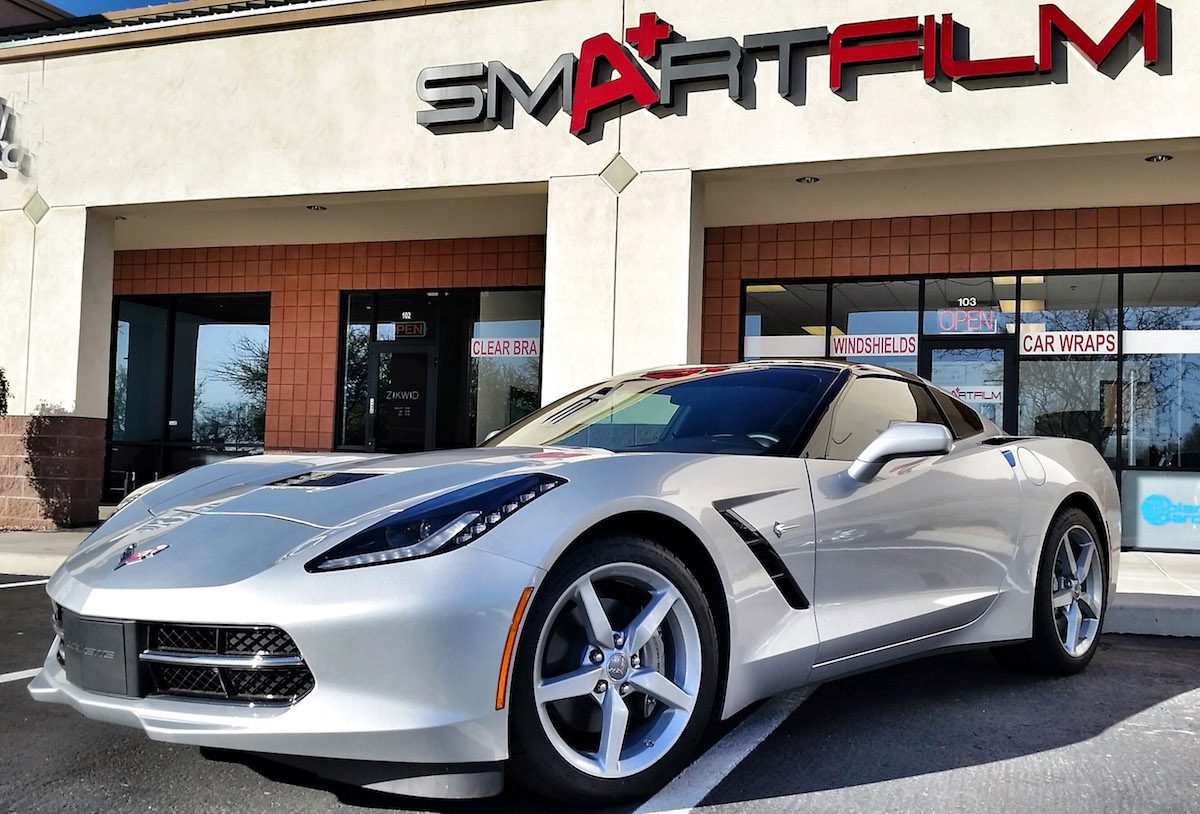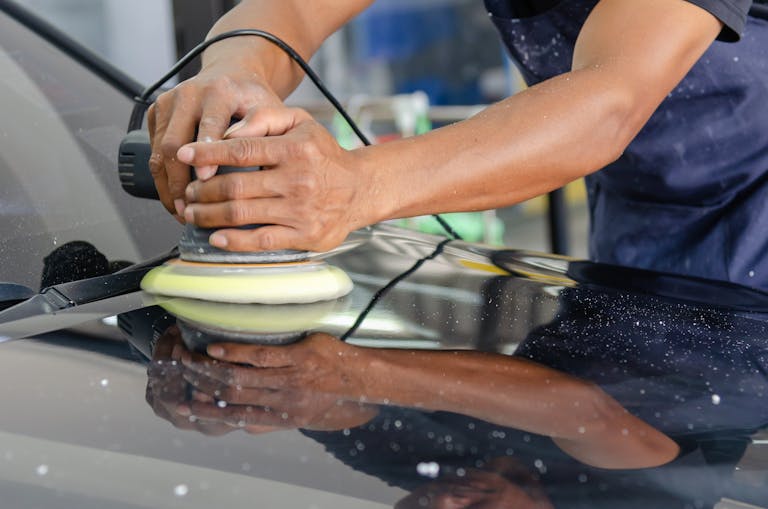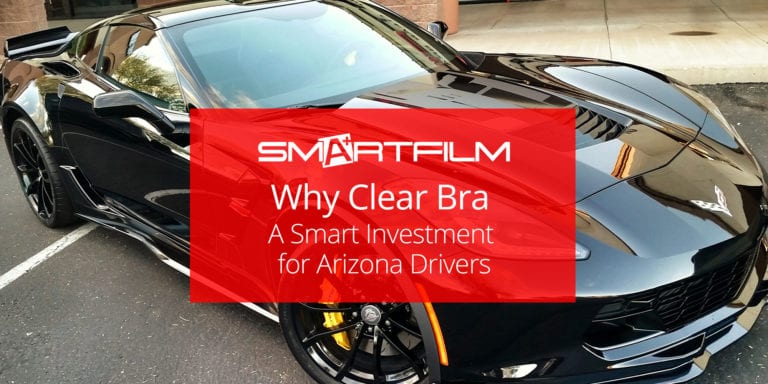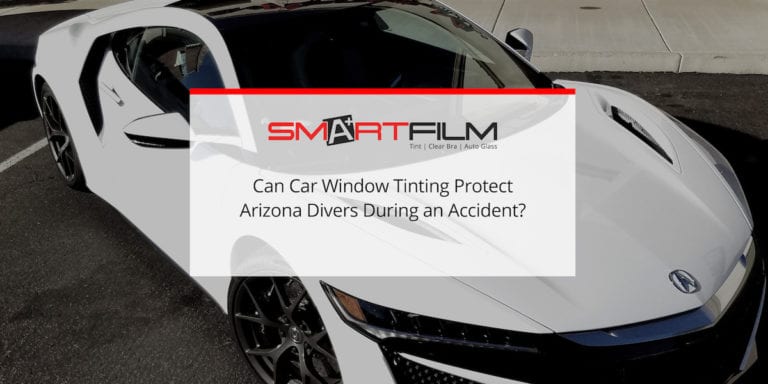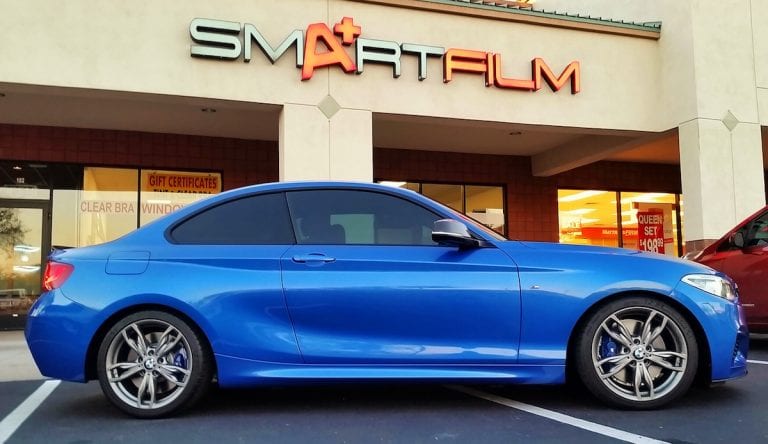What Is PPF Automotive and How Does It Protect Your Car?
Keeping your car’s paint flawless isn’t easy. From rock chips, acid rain, and gravel to everyday minor abrasions and stains, your vehicle faces constant threats on the road. That’s where PPF Automotive, also known as paint protection films, steps in.
This ultra-thin yet durable transparent film is designed to protect the paint by acting as a barrier against environmental hazards while preserving the original paint beneath.
According to a report from Grand View Research, the global market for paint protection films is expected to grow at over 5% annually through 2030, proving just how popular this solution has become among car owners who want to extend the life of their investment.
Drivers love PPF for its self-healing properties, where light scratches and scuffs disappear with heat, leaving behind a flawless ultra gloss finish or, for those who prefer unique looks, matte and satin options.
Of course, PPF isn’t without debate. Some argue the cost can be higher compared to alternatives like vinyl wraps. Others worry about potential yellowing or clarity issues if low-quality materials are used or if the installer lacks experience.
But reputable brands and professional installations typically back their protection films with strong warranties, ensuring long-term stain resistance and superior durability.
Whether you’re considering a clear PPF wrap for subtle protection or exploring colored PPF wraps for style, understanding how these products work will help you choose the best option to keep your vehicle looking showroom-new.
What is a Paint Protection Film?

Paint Protection Film (PPF Automotive), often called a clear bra or car PPF wrap, is more than just a transparent layer. Made from advanced thermoplastic polyurethane, these protection films are specifically designed to protect the paint on your vehicle against the everyday enemies of car paint, from rock chips and gravel to acid rain, bug splatter, and chemical stains.
Unlike waxes or temporary coatings, PPF acts as a durable barrier that keeps your original paint safe while delivering long-term value.
One of the most impressive features of today’s paint protection films is their self-healing technology. Light scratches and scuffs caused by minor abrasions can disappear with exposure to heat, restoring the gloss or matte surface without the need for repair.
For drivers seeking a balance of aesthetics and resilience, high-quality films offer an ultra-gloss finish, satin textures, or custom color PPF wraps that enhance a car’s style while providing real-world defense.
PPF also offers stain resistance, helping prevent long-term fading and discoloration caused by UV rays, bird droppings, or tree sap. Unlike some vinyl wraps, which focus on appearance, paint protection films are engineered to deliver both clarity and resilience, avoiding common issues like yellowing or premature tearing when professionally installed.
Of course, the cost of installation is a key consideration. While PPF may require a higher initial investment compared to vinyl, it often comes with a warranty and far fewer long-term maintenance concerns.
When you choose an experienced installer and trusted products, you gain a solution that not only helps protect the paint but also enhances the value of your vehicle for years to come.
How Does Paint Protection Film Work?
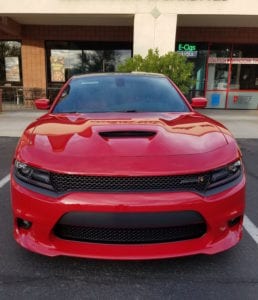
When people hear about PPF Automotive, they often wonder: how can a thin, almost invisible layer really protect the paint on a car? The secret lies in its multi-layer design, which is carefully designed to absorb, disperse, and resist the many threats that vehicles face every day.
Unlike waxes or quick sprays, paint protection films are a long-term product solution built on science, engineering, and premium materials.
The Multi-Layer System
1. Polyester Release Liner
Before the film ever touches your car paint, it comes protected with a release liner. This temporary layer ensures that the adhesive remains free of dust, debris, and stains, so when the time comes to apply it, the bond is flawless. A clean bond is critical to ensure that the protection film adheres evenly, without bubbles or imperfections.
2. Adhesive Layer
This layer allows the PPF to stick seamlessly to your vehicle’s paintwork. High-quality adhesives are strong but safe—meaning they protect the paint without causing damage when the film is eventually removed or replaced. Professional installers prefer adhesives with optimal clarity, ensuring the original paint color shines through, whether you’ve chosen a matte, satin, or ultra gloss finish.
3. Polyurethane Layer
Often called the “engine” of paint protection films, this thermoplastic urethane layer is what gives PPF its strength. Flexible yet durable, it’s designed to absorb the energy from rock chips, gravel, and minor abrasions, acting as a shock absorber. Some advanced films can reduce chip damage by up to 99% (XPEL, 2023), extending the life of your car paint.
4. Topcoat with Self-Healing Technology
This is where the real magic happens. The top layer of many modern protection films includes self healing properties. Light scratches and scuffs disappear when exposed to heat—whether from direct sunlight, hot water, or even the warmth of your engine. Beyond its self healing capability, the topcoat also provides stain resistance, helping your vehicle resist acid rain, bug splatter, and chemical etching. It also blocks harmful UV rays, preventing fading, yellowing, and loss of gloss.
Why It Matters
The beauty of paint protection films is that they not only protect the paint but also maintain the aesthetic appeal of your vehicle. Whether you want a clear PPF wrap that keeps things subtle or a color PPF wrap that transforms the look entirely, you’ll find options that balance style and protection. Unlike some vinyl wraps, which prioritize looks over durability, PPF is built to deliver both.
While the cost may be higher than waxes or basic coatings, many installers back their work with a warranty, making it a smart investment. Think of it as insurance for your car paint. This product pays for itself by preventing costly repair jobs, reducing maintenance, and keeping your vehicle looking showroom-ready.
In short, automotive PPF is a cutting-edge solution that combines durability, aesthetics, and advanced materials to ensure your vehicle stays protected against the road and time itself.
Read our article: What Makes XPEL Paint Protection Film a Must-Have
Scientific Principles of Paint Protection Films
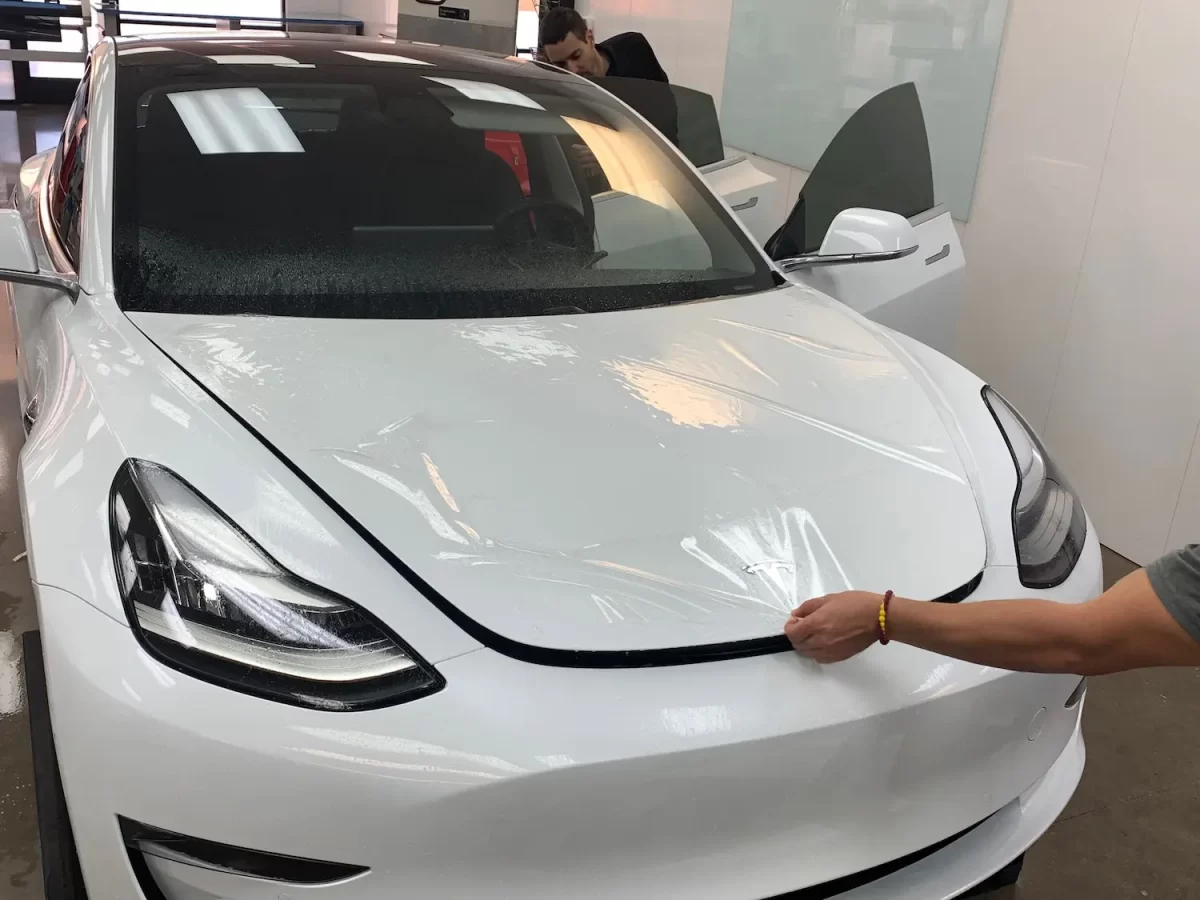
Modern paint protection films aren’t just plastic layers; they’re engineered using advanced chemistry and high-performance materials.
What makes them unique is the self-healing ability built into their topcoat.
This technology relies on elastomeric polymers that naturally return to their original shape when exposed to heat.
Whether it’s sunlight warming the hood, a hot water rinse, or simply parking after a drive, those polymers respond by erasing scratches, swirl marks, and other minor abrasions, leaving the surface smooth again.
Think about the everyday risks your vehicle faces: gravel, or even road debris. Normally, these would leave permanent marks on your car paint, but PPF works like a shock absorber. Instead of transferring the impact to the paint, the film disperses the energy, dramatically reducing visible damage.
Studies have shown that high-quality protection films can resist impacts at highway speeds without tearing, making them far more reliable than waxes or temporary coatings.
Another advantage is long-term durability and appearance. Inferior products often suffer from yellowing, fading, or loss of clarity over time. However, premium films are specifically designed to resist UV damage, acid rain, and chemical stains, ensuring that your vehicle maintains its showroom look. Whether you prefer an ultra-gloss finish, a sleek matte, or modern satin textures, the right PPF will both protect the paint and enhance its style.
When you choose professionally installed paint protection films, you’re not only safeguarding your car but also adding long-term value. It’s the science, layered engineering, resilient materials, and self-healing technology that make PPF one of the most trusted solutions to keep vehicles looking flawless for years.
Benefits of Paint Protection Film

Let’s explain the main benefits with practical examples.
1. Maintains Your Car’s Resale Value
Think about selling a used car. A vehicle with faded, scratched paint will lose thousands in value compared to one that looks showroom-new. By acting as a barrier against UV rays, bug splatter, and road salt, PPF preserves that “like-new” condition. For example, a three-year-old sedan with PPF may appraise 10–15% higher than a similar model with chipped paint.
2. Enhances Shine and Finish
High-quality protection films are designed to deliver an ultra-gloss finish, matte, or even satin effect, depending on the style you choose. Imagine pulling up to a weekend car meet: your coupe looks freshly waxed every time, even though you haven’t touched a wax kit in months. That polished look isn’t temporary; it’s built into the film.
3. Prevents Paint Damage
Driving behind trucks often means flying gravel or stones hitting your hood. Instead of dreading those impacts, PPF absorbs the energy, preventing chips and preserving color depth. It’s like having an invisible armor that keeps minor abrasions and scuffs from ever reaching the paint.
4. Easy Maintenance
No more constant waxing. A car with PPF only needs a gentle wash with mild detergent. For instance, instead of spending hours every month on exterior upkeep, you can clean your SUV in under 30 minutes while still enjoying the same gloss and stain resistance.
Read our article: Top Reasons to Choose High-Quality Paint Protection Film Services
Downsides of Paint Protection Film
While PPF provides impressive defense for your car paint, it’s not without limitations. Before investing, it’s important to understand potential drawbacks such as installation cost, application time, and long-term durability.
Installation Costs
The cost of PPF can be significant. Prices vary based on vehicle size, coverage area, and the installer’s expertise. A partial front-end wrap may start around $1,100, while full-body protection can climb to $5,000 or more.
Labor alone often ranges from $3 to $5 per square foot, with higher rates for customized work or premium finishes like matte or ultra gloss finish. For many owners, this upfront expense can feel steep compared to alternatives like vinyl wraps.
Time Investment
Applying protection films is a precise, detailed process. Depending on the coverage, your vehicle may need to remain in the shop for several days. For instance, a full-body application typically requires a minimum of three days.
The end result also depends heavily on the quality and experience of the installer; a rushed or inexperienced job could lead to bubbles, lifting edges, or reduced clarity.
Limited Lifespan
It’s also important to note that PPF is not permanent. Most films last 5 to 10 years, depending on driving habits, climate, and maintenance. Over time, issues like fading or loss of stain resistance may occur. To maximize longevity, regular inspections and timely replacements are essential.
While these downsides don’t outweigh the benefits for most car owners, they are critical factors to consider when deciding if PPF is the right long-term solution for your vehicle.
What Does PPF Protect Against?
UV Rays
Extended sun exposure is one of the biggest culprits behind fading, discoloration, and loss of gloss. PPF acts as a shield, blocking harmful UV radiation that gradually breaks down car paint. For example, without protection, a dark-colored sedan parked outside daily might lose its rich tone within a few years. With PPF, that same vehicle maintains its original paint depth and shine.
Minor Scratches & Scuffs
From brushing against bushes in a driveway to grit flung by other cars, scratches and minor abrasions are part of everyday driving. PPF absorbs these small impacts so they don’t reach your paint. Better yet, high-quality self-healing films can make light marks vanish with heat, restoring that showroom finish.
Rock Chips & Road Debris
Unexpected hailstorms or flying gravel can leave small dents or chips across your hood. PPF distributes impact energy, reducing the chance of visible damage. This is especially valuable for highway commuters who constantly face rock chips and debris.
Bug Splatter & Acidic Residue
Bug guts may seem harmless, but their acidic composition can etch into paint within hours. Similarly, bird droppings and tree sap can cause stubborn stains. PPF creates a non-porous layer that prevents these corrosive substances from bonding to your vehicle’s finish, saving you from costly repair work.
Acid Rain
In many regions, acid rain accelerates corrosion on exposed paint surfaces. PPF provides stain resistance and corrosion protection, keeping your vehicle safe even in challenging environments.
Road Salt
Winter driving introduces another enemy: road salt. While effective for melting ice, salt is highly corrosive to both metal and car paint. PPF ensures that your exterior remains shielded from this seasonal hazard, preserving your vehicle’s color and quality.
Care Tips After Installing PPF on Your Car
- Curing Period: Wait at least 7 days before washing your vehicle so the adhesive bonds fully.
- Safe Washing: Use pH-balanced soap and soft microfiber cloths. Avoid brushes or rough materials that may cause scratches or minor abrasions.
- Avoid Harsh Chemicals: Skip kerosene, degreasers, or cleaners with dyes—they can reduce the clarity of your paint protection film.
- Pressure Washer Precaution: If using a pressure washer, keep the nozzle away from the edges of the film to avoid lifting or tearing.
- Spot Cleaning: Quickly remove bird droppings, tree sap, or bug splatter to prevent stains and preserve your car paint.
Contact Us!
Our expert window tinting and paint protection film services in Mesa, Tempe, Gilbert, and the surrounding Arizona metro area will keep your car cooler, protect your loved ones from UV rays, and maintain its pristine condition. Visit our website or shop to explore the perfect tint for your vehicle!
FAQ’s
Is PPF Better Than Ceramic Coating For Protecting Car Paint?
Yes. PPF Automotive provides physical protection against rock chips, scratches, and minor abrasions. At the same time, ceramic coating mainly offers hydrophobic shine and UV defense. Many car owners choose PPF for impact resistance and pair it with ceramic coating for easier cleaning.
How Long Does Automotive PPF Last On A Vehicle?
High-quality paint protection films typically last 5 to 10 years, depending on driving conditions, climate, and proper maintenance. Premium products often include a warranty for added peace of mind.
Can PPF Be Removed Or Replaced Without Damaging The Paint?
Yes. When installed and removed by a professional installer, PPF can be safely taken off without harming your original paint. This allows you to replace or upgrade the film as needed.
